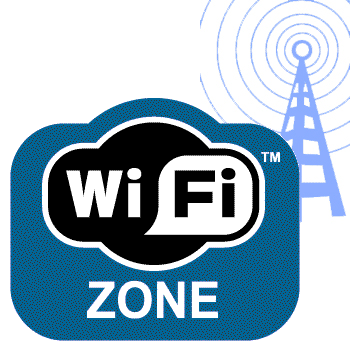You have probably heard somebody totting, a new super-cool Smartphone, boasting about its feature, talking about Wi-Fi. For all that you know he has no clue about Wi-Fi or how it is used. Let us try to decode this technology today.
Staying connected to the internet is increasingly becoming a pre-requisite for a lot of people nowadays. With the host of connectivity options, one can only believe that the adage world has become a smaller place after the advent of internet only becomes truer. So why fly to meet the client when you can video chat with them over Wi-Fi.
Wireless fidelity (Wi-Fi) is a way to connect to the internet without the hassle of wires. Similar to a broadband modem (the boxy instrument which lets you set up your internet connection), a Wi-Fi connection also requires a wireless modem for your pc to send wireless signals which let you log onto your favorite websites. However, nowadays with the advent of powerful portable technologies like the laptops, netbooks and smartphones the wireless signals is sent from a Wi-Fi modem which is built into these devices.
The basic technology involved in sending wireless is radio waves similar to the ones used in mobile phone cellular networks. The only difference is that Wi-Fi transmits at frequencies of 2.4 GHz or 5 GHz. This frequency is considerably higher than the frequencies used for cell phones, walkie-talkies and televisions.
The wireless router-wireless adapter technology works to connect to the internet. The wireless router transmits data received from the internet and converts them into radio signals which are received by the wireless adapter. Think of it as the manufacturer-wholesaler-consumer scenario. Manufacturer is the internet, the wholesaler is the wireless network and the consumer is you.
Wi-Fi is not the technical term but it is extensively used by the trade association Wi-Fi alliance to make it easier for computer technology. What this means is that the manufacturers who need to use Wi-Fi technology can use the branding for certified products.
You also may have seen terms like IEEE 802.11b, 802.11g, 802.11n which may have baffled you. IEEE 802.11 is nothing but a set of standards which is required to carry wireless communication over a computer network. 802.11 is the basic standard which was introduced in 2007. 802.11b, 802.11g and the others are all just amendments to these standards.
To explain this easily let me give you an example. If you were to start a new coffee shop, let us call it IEEE 802.11 so at this coffee shop a set of standards is followed to make the coffee. Now you have started a chain of stores and these stores have the liberty to bring about amendments to the standards but not have a new set of standards. So coffee shop IEEE 802.11a has an amendment that they can add vanilla ice cream to the regular cold coffee, which is an amendment to making regular coffee as the set standards of the original coffee shop.
Please remember that securing your Wi-Fi connection is very important or else your wireless network may be used by some unwanted elements in the society to send terror emails without your knowledge.
To know about how to secure your Wi-Fi connection and other technologies, keep reading noobcentral.


I have alway's feared security around Wi-fi. Waiting to read more on safety standards around Wi-fi.
ReplyDeleteVery interesting write- almost all posts till now.